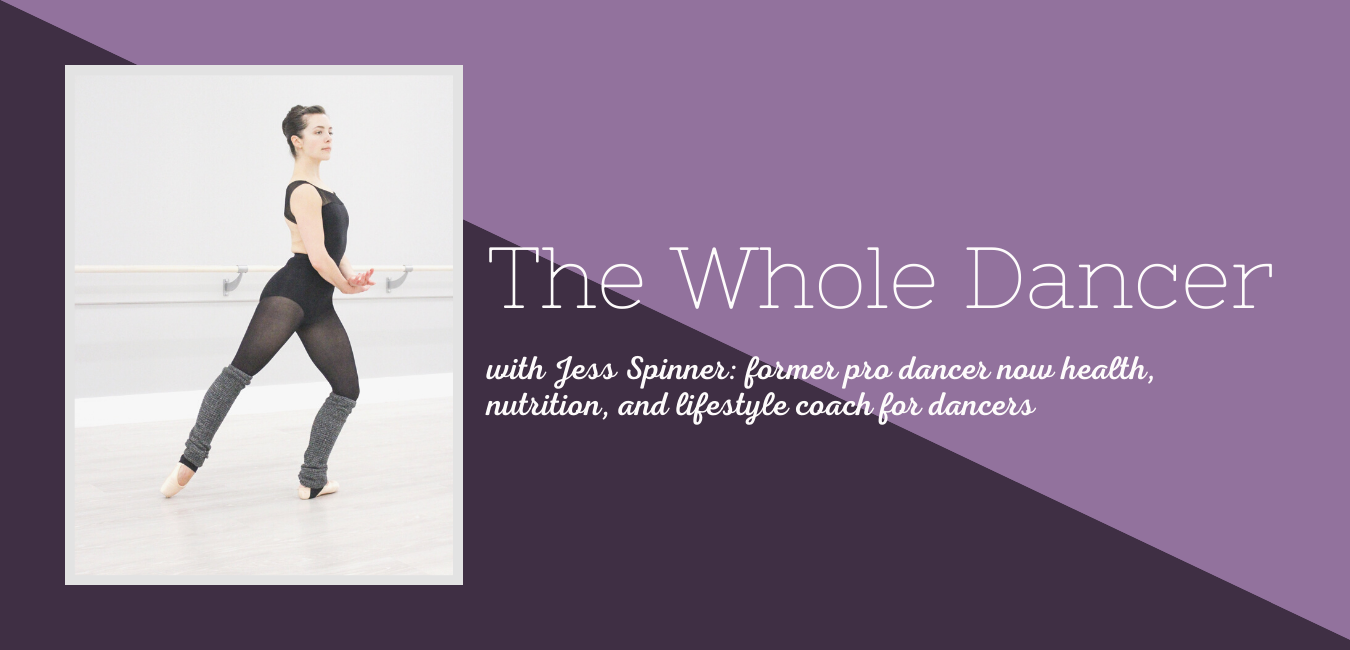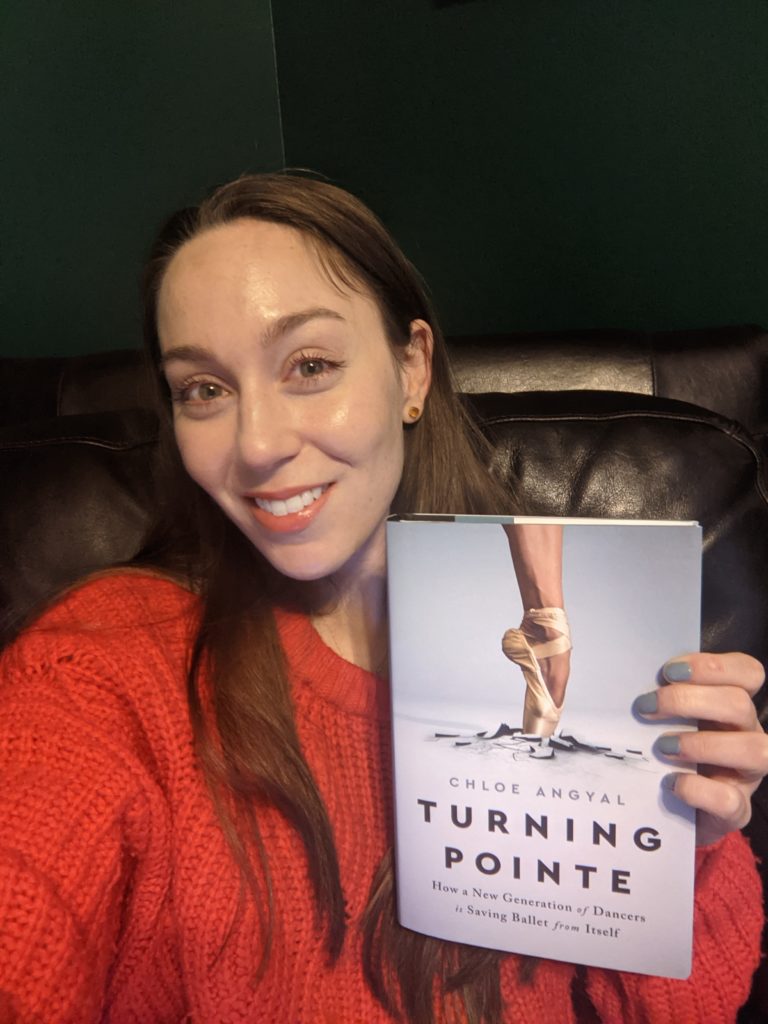The dance world needs to change.
There are certainly teachers and artistic directors taking time and doing the work to move the field forward. However, it’s clear to me quite regularly that many things still need attention. In her new book, Chloe Angyal dives into all the ways ballet is behind and gains insight from those intertwined in the artform to shed light on its biggest areas of opportunities.
This is a must-read for dancers, dance parents, teachers, directors…anyone who hopes to take ballet forward. Take the time to take it in. Be open to the information and insights Angyal uncovers.
Jess Spinner (The Whole Dancer Founder):You have covered a variety of different topics in your journalism — politics, women’s sports, MarieClaire. What made you decide to write this book, and how long had you been toying with the idea before doing so?
Chloe Angyal (Turning Pointe Author): I’ve spent my entire career writing about gender and power and how they shape the lives of women and girls. When I thought about how gender and power have shaped my own life, one of the earliest places where I learned powerful lessons about my body and about femininity was in the ballet studio. I had been writing about ballet for HuffPost for about a year when I started to think there could be a book’s-worth of things to say about it.
JS: Obviously, this book is targeted towards dancers — who else do you think would benefit from reading this (parents, teachers, doctors)?
CA: I wrote this book for people who love ballet, and especially for people who have a complicated loving relationship with ballet. People who felt like there wasn’t a place in ballet for them because of racism or sexism or homophobia or elitism, or who are still trying to understand why this art form they loved wouldn’t love them back. But it’s also true that even people who do have good experiences in ballet — and there are lots of them — have an experience that’s shaped by those prejudices and inequities. I want every current and former ballet dancer to read it and every ballet parent and every ballet teacher and anyone who’s interested in the future of ballet or the health and wellbeing of the people who do ballet.
JS: While it’s true that more and more people are speaking out about mental health and impossible standards in ballet (I’m particularly thinking of the emerging health coaches for dancers and the Kathryn Morgan body image movement at MCB), what will it REALLY take for the ballet world to change?
CA: It’s going to take all of us — whether we’re dancers, teachers, artistic directors, or ballet-goers — looking ballet’s shortcomings in the face and recognizing how they’ve shaped us and how we’ve perpetuated them ourselves. It will take us all recognizing that those shortcomings are slowly killing ballet and deciding that we care more about saving this art form than we do about watching extremely thin dancers or almost entirely white companies.
JS: When hearing people speak out about the not-so-glamorous parts of being a ballet dancer (strict diets, weigh-ins, fat talks, pressure, not being able to use one’s voice, etc.), I can’t help but wonder how the current ballet company model has remained sustainable for so long. What are your thoughts on this? Why is such a broken system still alive and well today?
CA: Because it works for the people at the top. And until that changes, until the people at the top realize that the broken system — even if it serves them — is breaking everyone else, they won’t try to fix it.
JS: What would you say to dancers who are desperate to, and will do anything to, dance professionally but know they are in an unhealthy environment that exercises unhealthy patterns?
CA: That they’re having a rational response to an irrational situation. They didn’t create this system, they’re just trying to survive within it, and there’s no shame in that. I would encourage them to talk to each other about the inequities they’re experiencing, because abuse thrives on — and in fact depends on — silence. And I would tell them that if they decide to walk away, it’s not because they failed at ballet. It’s because ballet failed them.
JS: In your opinion, why do dancers and teachers fail to speak up about the toxicity and unfairness of the ballet world?
One of the most surprising self-discoveries of writing this book was the extent to which I had internalized what I’m going to call “ballet logic.” When you’ve spent your entire childhood and adolescence watching the adults around you enforce and explain away the status quo, it probably doesn’t occur to you that there’s something seriously wrong with the status quo. Sometimes, explaining your insular world to an outsider is what makes you realize how abnormal it is, even if it seems totally normal to you.
As much distance as I have from ballet — I was never a serious ballet student, I was never a professional dancer, and I haven’t been a serious amateur dancer in over a decade — I still sometimes find myself slipping into those explanations about why things have to be this way. In writing this book, I had to explain that status quo to outsiders — to people like my editor, who didn’t grow up in ballet — and in doing so, had to continually face the fact that actually, something is very wrong here. But lots of dancers and teachers don’t have the opportunity to do that.
JS: Classical ballets perpetuate the narrative of racism, sexism, and inequality (depicting women as weak, men in positions of power, not inclusive of race or gender, etc.). Do you think that continuing to perform these ballets as a way of preserving history is justifiable? Or does the entire repertoire need a makeover?
CA: I think if we’re going to hold on to these stories, we need to find new ways of telling them. Maybe that means handing them over to the people they’ve traditionally marginalized or caricatured to remake and redeem. Maybe it means presenting them with proper context about when they were originally made and why. It absolutely means adding new stories and new storytellers to make the ballet repertory more diverse, more representative, and, frankly, more interesting. We’re missing out on so many stories and so many perspectives right now, and if we don’t change that, we’re going to spend the entire 21st century watching the very same ballets we staged in the 19th and 20th centuries.
JS: What are some additional resources you could point us to in addition to your book if we are looking for more information or more ways to advocate for changing the ballet world?
CA: Memoirs of Blacks in Ballet (mobballet.org) is an indispensable resource for people who want to learn about the real history of ballet in America. Final Bow For Yellowface is creating opportunities for Asian American artists to make and dance in ballets that treat them and their cultures with dignity and respect. Minding the Gap is doing essential work on mental health for dancers, and Minnie Lane makes genuinely moving (and sometimes hilarious) TikTok videos about inequity in ballet. A few companies you should check out and support if you can: Queer the Ballet, Ballez, Contretemps Ballet, Black Sheep Ballet, Ballet 22, and Black Iris Project.
JS: Where and when can we find your book?
CA:Turning Pointe is on sale everywhere you buy books. If buying books isn’t in your budget right now, call your local library and ask them to get it for you; that will also mean everyone in your community will have access to it for free too.
And if you’re a dance teacher or a dance parent and you want to bring me and the book to your dance school for a free virtual event, I’m doing those all over the country this spring, summer, and fall. Click here for more info about how to make that happen.

